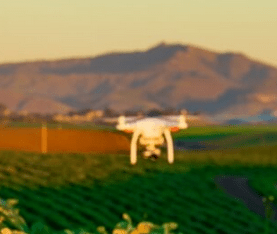By Mike Winn, CEO and co-founder, DroneDeploy —
With the passing of Part 107, the drone industry is finally poised to truly spread its wings. Part 107, the FAA’s operating rules for commercial drones, is a step change for businesses’ ability to use drones at scale. It’s going to unleash a tidal wave of commercial drone adoption.
This year we’ve seen many big businesses go from testing the waters to rolling out formal drone programs and processes. Initially, some opted to use drone service providers while others chose to do it internally, requesting Section 333 exemptions and experimenting with drones, largely led by internal innovation teams. Now, with the passing of Part 107 we’re seeing enterprises move quickly to take the next step. These internal innovation teams are now becoming Drone Centers of Excellence, some going as far as creating internal Part 107 training programs to prepare their workforce to leverage drones across the entire organization.
The Value of a Bird’s Eye View
What’s driving these companies to move so quickly? Access to on-demand and up-to- date aerial data is unprecedented for most businesses and enables better and faster decisions than ever before. What could you do if you had weekly, daily or even hourly visibility at a granular level to your quarry, field or site? For our clients, it’s transformative. For the first time, distributed teams are collaborating without needing to be on-site, quality control teams are catching issues earlier, and teams are knowing where to focus without needing to walk a site.
Businesses are seeing immediate value, and those that chose to operate drones in-house experienced first- hand how cost-effective and scalable commercial drones have become. Many started by purchasing drones online (many straight off Amazon) and did their first flights manually while capturing video. They quickly realized that to incorporate drones into their workflows they really needed repeatable, measurable data sets.
That’s when they downloaded the DroneDeploy flight and data app to their iPad or Android device and had a bird’s-eye- view of their site within an hour or two. All this with just two taps on their mobile device, and no technical skill-set.
The 4 Levels of Commercial Drone Adoption
While drone technology will continue to evolve (and rapidly, if the past is any indication of the future), what we’re seeing today is just the beginning. I believe we’ll eventually see four levels of commercial drone adoption before the market reaches full maturity.
- Level 1, currently well underway, is when businesses turn to drone service operators to collect aerial data on their behalf. Businesses that might not be ready to buy and operate their own drone can find experts that come to fly their site, and in the process test drone capabilities and realize benefits without much commitment.
- Level 2 is starting to happen as businesses see drone data deliver actionable insights and decide to do it for themselves. These businesses will start with small internal teams using drones. They’ll bring drones in-house, not because of the cost (which is low) but because of the speed and flexibility they gain in their business decision-making process. While we see this segment growing rapidly today, the total potential market for commercial drones is so large that it’ll be years before the market as a whole matures to this level.
- Level 3 is about using drones at scale, and it’s happening now for the very first time with Part 107. Up to this point, many businesses faced a bottleneck due to the limited number of licensed drone pilots. With the new, less stringent drone pilot licensing requirement, this is no longer a constraint and companies are making plans to train significant numbers of pilots, who can operate a drone whenever necessary. Businesses are finally seeing a path to rolling out drones across their organization.
But what about the future and Level 4? Level 4 is the point at which drones achieve their full potential. Up to now, under Section 333, a commercial operation required a trained pilot and a spotter. Part 107 now moves the industry from needing many people and one drone (many:1), to one person and one drone (1:1); but how long will it be until regulations allow for one person to operate many drones (1:many)?
- Level 4 is when drones will operate completely autonomously, controlling their own schedules, communicating with other “Internet of Things” devices in their area, landing on their own charging pads and being operated from central offices as needed.
The Evolution of Drones
The evolution of drones is following two different approaches, which is a similar path to that of self-driving cars. Companies like Google are aiming to achieve Level 4 automation directly from the start – fully autonomous cars that don’t even have steering wheels. While other companies, like Tesla, are tackling the same challenge but taking a more iterative approach by starting with driver assistance technologies.
The same can be said for drones – some companies today are pursuing a fully autonomous approach, incorporating battery changing pads and all. Others are developing drone automation in steps. Either way, both approaches lead to the same outcome – an autonomous drone on every job site.
Mike Winn is the CEO of DroneDeploy, a powerful, cloud-based image processing software that is compatible with any drone. You can learn more about DroneDeploy here and start making aerial maps and 3D models for free by signing up here.
Miriam McNabb is the Editor-in-Chief of DRONELIFE and CEO of JobForDrones, a professional drone services marketplace, and a fascinated observer of the emerging drone industry and the regulatory environment for drones. Miriam has penned over 3,000 articles focused on the commercial drone space and is an international speaker and recognized figure in the industry. Miriam has a degree from the University of Chicago and over 20 years of experience in high tech sales and marketing for new technologies.
For drone industry consulting or writing, Email Miriam.
TWITTER:@spaldingbarker
Subscribe to DroneLife here.
